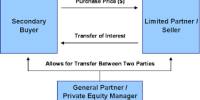Executive summary
Capital budgeting techniques are used to analyze and assess project acceptability and ranking. They are applied to each project’s relevant cash flows to select capital expenditures that are consistent with the firm’s goal of maximizing owners’ wealth.
Here we discussed one of the capital budgeting techniques that is Payback Period. The payback period is the amount of time required for the firm to recover its initial investment, as calculated from cash inflows. We identified lacking and tried to give some recommendations also.
Capital Budgeting Techniques

INTRODUCTION
Payback Period
Payback periods are commonly used to evaluate proposed investments. The payback period is the amount of time required for the firm to recover its initial investment in a project, as calculated from cash inflows. In the case is an annuity, the payback period can be found by dividing the initial investment by the annual cash inflow. For a mixed stream of cash inflows, the yearly cash inflows must be accumulated until the initial investment is recovered. Although popular, the payback period is generally viewed as an unsophisticated capital budgeting technique, because it does not explicitly consider the time value of money.
FINDINGS & ANALYSIS
Formula
For annuity:
Initial investment
Annual cash inflow
For mixed stream: Calculate cumulative cash inflows in year-to-year basis until the initial investment is recovered.
The Decision Criteria
When the payback period is used to make accept-reject decisions, the decision criteria are as follows:
- If the payback period is less than the maximum acceptable payback period, accept the project.
- If the payback period is greater than the maximum acceptable payback period, reject the project.
The length of the maximum acceptable payback period is determined by management. This value is set subjectively on the basis of a number of factors, including the type of project (expansion, replacement, renewal), the perceived risk of the project, and the perceived relationship between the payback period and the share value. It is simply a value that management feels, on average, will result in value creating investment decisions.
Example
Fitch Industries is in the process of choosing the better of two equal-risk, mutually exclusive capital expenditure projects- M and N. the relevant flows for each project are shown in the following table. The firm has a maximum acceptable payback period of 3 years.
| Project M | Project N | |
| Initial investment (CFo) | $28,500 | $27,000 |
| Year (t) | Cash inflows (CFt) | |
| 1 | $10,000 | $11,000 |
| 2 | 10,000 | 10,000 |
| 3 | 10,000 | 9,000 |
| 4 | 10,000 | 8,000 |
Payback periods
$28,500
Project M: ………………. = 2.85 years
$10,000
Project N:
| Year (t) | Cash inflows (CFt) | Cumulative cash inflows |
| 1 | $11,000 | $11,000 |
| 2 | 10,000 | 21,000 |
| 3 | 9,000 | 30,000 |
| 4 | 8,000 | 38,000 |
$27,000-$21,000
2+ ……………………… years
$9,000
$6,000
2+……………………….. years = 2.67 years
$9,000
As we know the acceptable payback period is 3 years; so the company can accept both projects. But if the company decided to accept only 1 project then Project N should be accepted because it will take less time than Project M to recover the initial investment.
As we know the acceptable payback period is 3 years; so the company can accept both projects. But if the company decided to accept only 1 project then Project N should be accepted because it will take less time than Project M to recover the initial investment.
PROS AND CONS
Advantages:
- The payback period indicates to firms taking on projects of high risk how quickly they can recover their investment.
- It tells firms with limited sources of capital how quickly the funds invested in a given project will become available for future projects.
Disadvantages:
- The major weakness of the payback period is that the appropriate payback period is merely a subjectively determined number. It cannot be specified in light of the wealth maximization goal because it is not based of discounting cash flows to determine whether they add to the firm’s value. Instead, the appropriate payback period is simply the maximum acceptable period of time over which management decides that a project’s cash flows must break even (that is, just equal the initial investment).
- A second weakness is that this approach fails to take fully into account the time factor in the value of money.
- A third weakness of payback is its failure to recognize cash flows that occur after the payback period.
SOLUTIONS OF DISADVANTAGES
- To consider differences in timing explicitly in applying the payback method, the present value payback period is sometimes used. It is found by first calculating the present value of the cash inflows at the appropriate discount rate and then finding the payback period by using the present value of the cash inflows.
- To get around the third weakness, some analysts add a desired dollar return to the initial investment and then calculate the payback period for the increased amount.
















